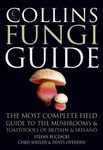About this book
Recent years have seen extensive research in the molecular underpinnings of symbiotic plant-fungal interactions. Molecular Mycorrhizal Symbiosis is a timely collection of work that will bridge the gap between molecular biology, fungal genomics, and ecology. A more profound understanding of mycorrhizal symbiosis will have broad-ranging impacts on the fields of plant biology, mycology, crop science, and ecology.
Molecular Mycorrhizal Symbiosis will open with introductory chapters on the biology, structure and phylogeny of the major types of mycorrhizal symbioses. Chapters then review different molecular mechanisms driving the development and functioning of mycorrhizal systems and molecular analysis of mycorrhizal populations and communities. The book closes with chapters that provide an overall synthesis of field and provide perspectives for future research.
Authoritative and timely, Molecular Mycorrhizal Symbiosis, will be an essential reference from those working in plant and fungal biology.
Contents
List of contributors vii
Foreword xi
Preface xiii
Section 1: Structure and phylogeny of mycorrhizal symbioses, 1
1 Origins of the mycorrhizal symbioses, 3
Christine Strullu-Derrien, Paul Kenrick, and Marc-André Selosse
2 Reappraising the origin of mycorrhizas, 21
William R Rimington, Silvia Pressel, Katie J Field, Christine Strullu-Derrien, Jeffrey G Duckett, and Martin I Bidartondo
3 The structure of arbuscular mycorrhizas: A cell biologist’s view, 33
Andrea Genre and Paola Bonfante
4 Structure and development of ectomycorrhizal roots, 47
Raffaella Balestrini and Ingrid Kottke
5 Structure and development of orchid mycorrhizas, 63
John Dearnaley, Silvia Perotto, and Marc-André Selosse
Section 2: Cellular, genetic and molecular mechanisms in the establishment of mycorrhizal symbioses, 87
6 The evolution of the mycorrhizal lifestyles – a genomic perspective, 89
Annegret Kohler and Francis Martin
7 Strigolactones and lipochitooligosaccharides as molecular communication signals in the arbuscular mycorrhizal symbiosis, 107
Clare Gough and Guillaume Bécard
8 Calcium signaling and transcriptional regulation in arbuscular mycorrhizal symbiosis, 125
Leonie Luginbuehl and Giles ED Oldroyd
9 Signaling pathways driving the development of ectomycorrhizal symbiosis, 141
Yohann Daguerre, Jonathan M Plett, and Claire Veneault-Fourrey
Section 3: Physiology, including carbon and nutrient exchange between symbionts, 159
10 Carbohydrate metabolism in ectomycorrhizal symbiosis, 161
Uwe Nehls, Arpita Das, and Dimitri Neb
11 Nitrogen acquisition in ectomycorrhizal symbiosis, 179
Rodica Pena
12 Phosphorus metabolism and transport in arbuscular mycorrhizal symbiosis, 197
Katsuharu Saito and Tatsuhiro Ezawa
13 Primary metabolism in arbuscular mycorrhizal symbiosis: Carbon, nitrogen and sulfur, 217
Michael Bitterlich, Jan Graefe, and Philipp Franken
14 The transportome of mycorrhizal systems, 239
Pierre-Emmanuel Courty, Joan Doidy, Kevin Garcia, Daniel Wipf, and Sabine Dagmar Zimmermann
15 Soil organic matter decomposition mechanisms in ectomycorrhizal fungi, 257
Anders Tunlid, Dimitrios Floudas, Roger Koide, and François Rineau
16 Homeostasis of trace elements in mycorrhizal fungi, 277
Joske Ruytinx, Elena Martino, Piotr Rozpadek, Stefania Daghino, Katarzyna Turnau, Jan Colpaert, and Silvia Perotto
Section 4: Population and community ecology, and environmental genomics, 299
17 Molecular identification of fungi, 301
Leho Tedersoo and R Henrik Nilsson
18 Molecular technologies applied to the ecology of ectomycorrhizal communities, 323
Marc Buée, Erwin Sentausa, and Claude Murat
19 The biogeography of ectomycorrhizal fungi – a history of life in the subterranean, 341
Kabir G Peay and P Brandon Matheny
20 Spatial ecology of ectomycorrhizal fungal communities, 363
Brian J Pickles and Ian C Anderson
21 Fungal ecology in boreal forest ecosystems, 387
Björn D Lindahl and Karina E Clemmensen
22 Ecology of ericoid mycorrhizal fungi: What insight have we gained with molecular tools and what’s missing?, 405
Gwen Grelet, Elena Martino, Ian A Dickie, Rosnida Tajuddin, and Rebekka Artz
23 Evolutionary genomics of arbuscular mycorrhizal fungi, 421
Rohan Riley, Philippe Charron, Timea Marton, and Nicolas Corradi
24 Mycorrhiza helper bacteria, 437
Aurélie Deveau and Jessy Labbé
25 Mixotrophy in mycorrhizal plants: Extracting Carbon from mycorrhizal networks, 451
Marc-André Selosse, Melissa Faust Bocayuva, Maria Catarina Megumi Kasuya, and Pierre-Emmanuel Courty
26 Second-generation molecular understanding of mycorrhizas in soil ecosystems, 473
Ian A Dickie and Mark G St John
Index, 493
Customer Reviews
Biography
Francis M. Martin is Research Director at the French National Institute for Agricultural (INRA) and leader of the INRA-Nancy Center of Exellence in Forestry. Dr. Martin has been researching plant effectors for more than a decade and has carried our research in France, the United States, Canada, and Australia. He has published more than 140 peer-reviewed papers, 17 review papers and 35 book chapters. He is now the lead scientist at the Ecogenomics of Interactions Lab at INRA.



































